7 Vegetables To Plant In January: Kickstart The Growing Year
Now the holiday festivities have fizzled out, it’s time to put those New Year’s resolutions into gear. If you’re planning to spend more time gardening this year, then growing your own organic crops is the perfect way to start. But, is January too soon to plant seeds?
Depending on where you live, it’s definitely not too soon. You can plant certain vegetables in January to jump-start your goals and the new gardening season.
Whether you’re starting a vegetable garden this year or just looking to maximize your growing potential, then you may be able to start cold-weather vegetables from seed indoors, in a greenhouse, or even outside crops.
Here’s a guide to some of the best vegetables for an early start to the gardening season.
Tips for Starting Seeds Indoors
In most areas, growing seeds outside in January just isn’t feasible. The ground is either frozen or covered in snow, or a frost is imminent. But, you can start some seeds indoors to let them germinate and sprout. If you time it right, you should be ready to transplant seedlings outside after the average last frost date.
When starting seeds, follow the specific instructions on the seed packet for each vegetable. In general, it’s best to use a light potting mix or a mix designed especially for starting seeds. It should drain very well.
Use containers with good drainage, too. Specially designed seed trays, such as Vego seed-starting bundles, available in the Gardening Know How Shop, are ideal or, if you saved them, the plastic transplant trays you got from a nursery the previous spring.
Keep seeds moist and warm as they germinate. The soil should be damp but not soggy and the tray should be covered in plastic to hold moisture in. Use a warming pad to keep the trays warm or place them in a warm window. Once the seeds have sprouted, you can thin seedlings to prevent crowding. Ensure they get plenty of sunlight once the leaves are visible.
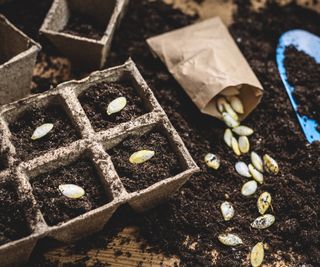
(Image credit: Zbynek Pospisil/Getty Images)
Starting Seeds Outdoors
Only risk direct sowing seeds outdoors in January if you live in a climate with very mild winters. Even in USDA hardiness zone 10 in North America, there can be a frost as late as the middle or end of January. Still, you can risk it if you protect your seeds.
Use straw or other mulch to cover them and protect against frost. If your area is more borderline, consider using cold frames to start seeds early in the year.
Vegetable Seeds to Start in January
Growing vegetables in January is a great way to kickstart the gardening season, but it is highly dependent on your growing zone. Choose vegetables according to your last frost date, how long you plan to grow them indoors, and when they can be transplanted outside.
These vegetable picks are an ideal place to start – and if you’re ready to go seed shopping for the growing season ahead, visit the Gardening Know How Shop for the tastiest non-GMO vegetable varieties – from beets to tomatoes.
1. Onions
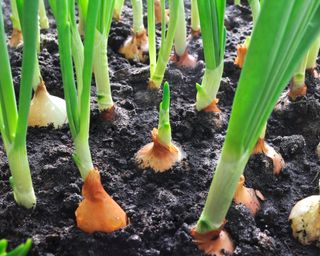
(Image credit: Getty Images)
Onions are ideal for starting in January in many growing zones because they take a long time to grow to maturity.
When growing onions, let them get to five or six inches (13 or 15cm) tall. Then, cut the tops back to three inches (8cm). Keep repeating this until it’s time to transplant the onions outdoors. It will help the plant put more energy into root and bulb growth. If growing green onions, do not cut off the stems.
2. Kale
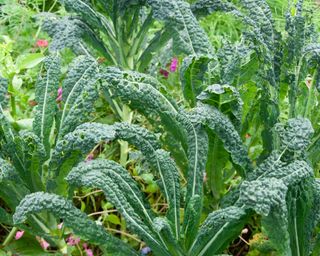
(Image credit: Getty Images)
Kale is a cool-weather vegetable. If you have mild winters, you can sow seeds directly outside in January and start harvesting in spring.
If you are in a location with very cold winters, sow the seeds inside in late January. They should be ready to transplant in about five weeks. Kale actually tastes sweeter when it has been through a cold spell.
Lacinato kale, available in the Gardening Know How Shop, is a heritage variety with a particularly good flavor.
3. Garlic
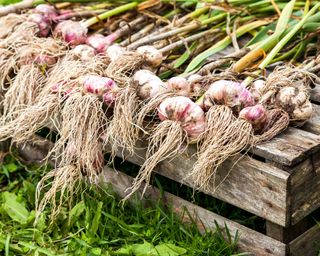
(Image credit: Getty Images)
In colder climates, garlic is typically started in fall. If you missed that window, you can still plant some cloves in January and get good results. Use seed garlic from a reputable vendor. Grocery store garlic is typically treated with a growth inhibitor.
Start the cloves in shallow pots and place them in a cold area, like a garage. They need about two months of cooler temperatures to develop. Keep the soil moist and check on the pots in mid to late spring for growth.
4. Broccoli
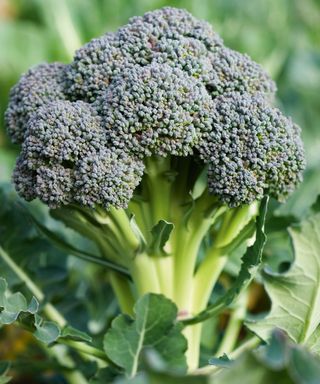
(Image credit: Alamy)
Broccoli is a cool-weather vegetable that can be started in January. Choose a variety based on the maturity time and your growing zone.
For colder, longer winters, choose a type with a longer maturity period, up to 100 days. Or, for warmer areas select a quick-growing variety such as Castle Dome hybrid broccoli, available in the Gardening Know How Shop.
5. Cabbage
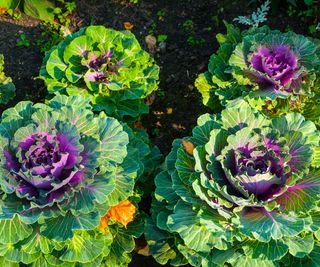
(Image credit: Marina Zezelina / Shutterstock)
Another cool-weather veggie, cabbage started in January will be ready to enjoy in spring. You can enjoy a double harvest by starting another round of cabbage in summer to harvest in fall.
Try different types of cabbage for more variety: green, purple, and Napa cabbage can all be grown starting in January.
6. Peas
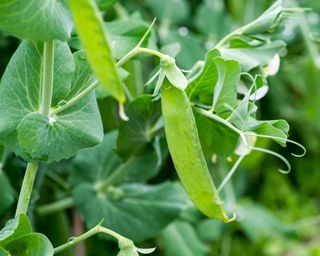
(Image credit: Getty Images)
Tasty peas tolerate light frosts. You can start sowing seeds in January and risk transplanting outside in spring, depending on your last frost date.
If you live in a warmer zone where the ground doesn’t freeze in winter, you can sow seeds directly outside.
Nick the seeds before planting them to improve the germination rate.
7. Microgreens
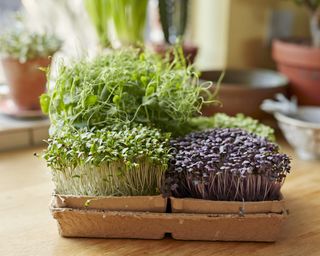
(Image credit: Getty Images)
This is an easy January grow for anyone in any location. The idea of microgreens is to grow vegetables just long enough to get tender baby greens you can eat. You can do this indoors any time of year. They grow quickly and are ready to harvest and use within days or up to a week after the seeds germinate.
Members of the brassica family are ideal for growing microgreens: broccoli, radish, cauliflower, cabbage, kale, arugula, and mustard. You don’t need a lot of space to grow microgreens. Set up a couple of small trays on a sunny kitchen windowsill.
More Vegetable Growing Inspiration
This article features products available from third party vendors on the Gardening Know How Shop.






